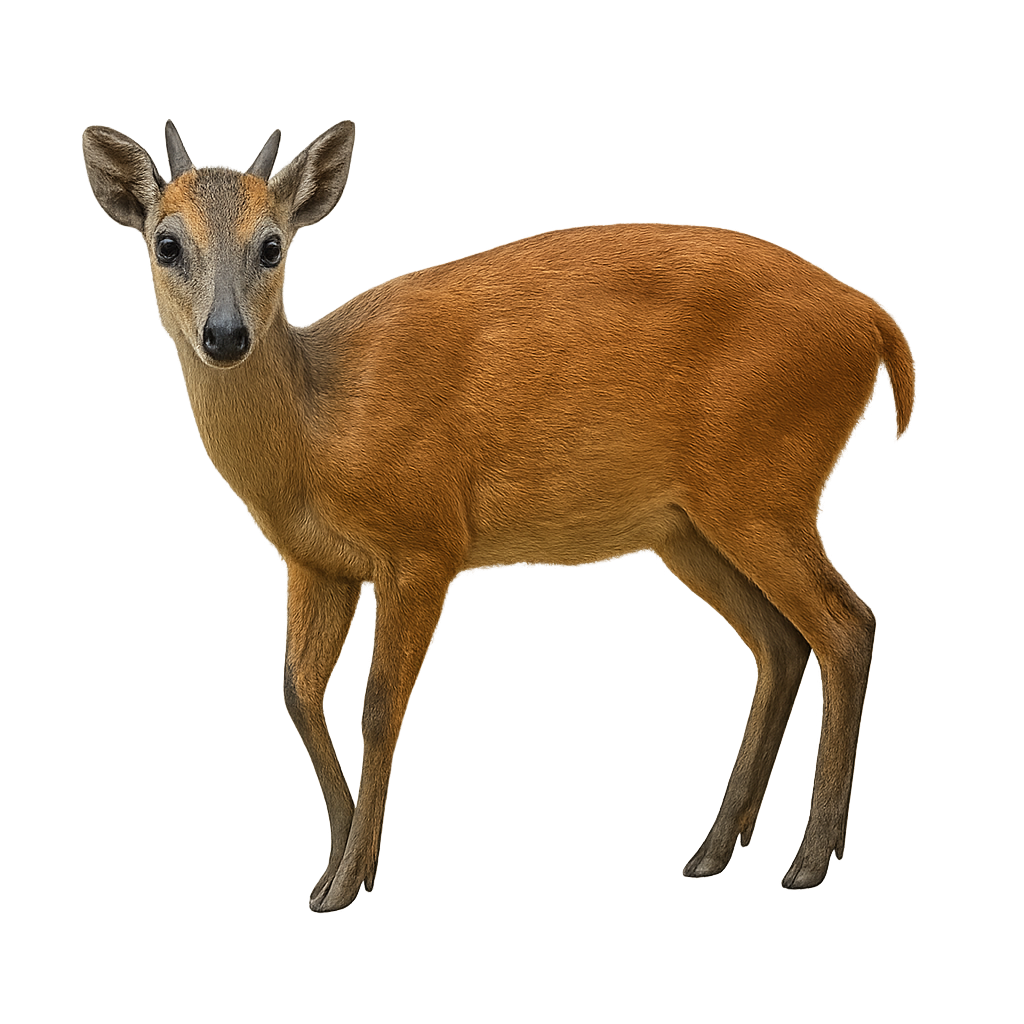Your wildlife photography guide.
Explore the natal red duiker in detail, study its behavior, prepare your shots.
Where to observe and photograph the natal red duiker in the wild
Learn where and when to spot the natal red duiker in the wild, how to identify the species based on distinctive features, and what natural environments it inhabits. The WildlifePhotographer app offers tailored photography tips that reflect the natal red duiker’s behavior, helping you capture better wildlife images. Explore the full species profile for key information including description, habitat, active periods, and approach techniques.
Natal Red Duiker
Scientific name: Cephalophus natalensis

IUCN Status: Least Concern
Family: BOVIDAE
Group: Mammals
Sensitivity to human approach: Shy
Minimum approach distance: 30 m
Rut period: September to October
Gestation: 210-220 jours
Births: April to May
Habitat:
Dense forest
Activity period :
Crépusculaire crepuscular dämmerungsaktiv crepuscular
Identification and description:
The Cephalophus natalensis, or Natal Red Duiker, is a small African antelope that primarily inhabits dense forests and wooded areas in eastern South Africa. It is distinguished by its reddish coat, slender legs, and short, straight horns. This discreet mammal stands about 40 to 50 cm at the shoulder and weighs between 12 and 14 kg. It is mainly active at dawn and dusk, feeding on leaves, fruits, and flowers. The Natal Red Duiker is known for its shy nature and ability to blend into its environment to escape predators. Its population is stable, although deforestation poses a potential threat.
Recommended lens:
400 mm – adjust based on distance, desired framing (portrait or habitat), and approach conditions.
Photography tips:
To photograph the Natal Red Duiker, it's essential to remain discreet and patient. Use a 400mm or longer telephoto lens to capture images without disturbing the animal. Look for areas with dense vegetation, as these duikers prefer wooded habitats. Be ready to shoot at dawn or dusk when activity is at its peak. Ensure your camera is set for low-light conditions and use a tripod to avoid blur. Patience is key to capturing successful shots of this shy animal.
The WildlifePhotographer App is coming soon!
Be the first to explore the best nature spots, track rutting seasons, log your observations, and observe more wildlife.
Already 1 430 wildlife lovers subscribed worldwide

